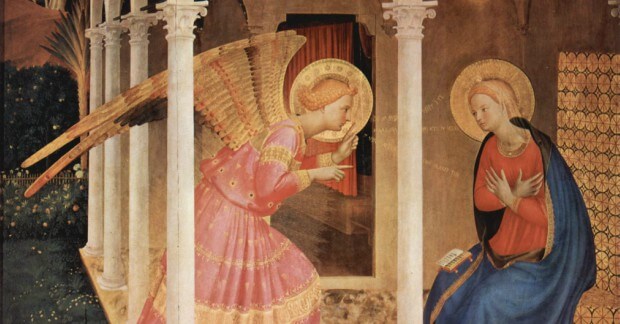The prophecy of Isaiah 7:14 is among the most well-known passages in the book of Isaiah. It’s also one of the most controversial, for many reasons.
Therefore the Lord himself will give you a sign. Behold, the virgin (עלמה, almah) shall conceive and bear a son, and shall call his name Immanuel.
It’s difficult to get through the Christmas or Easter season without seeing one of the major news periodicals or educational television networks cast doubt about the meaning of almah (עלמה) in Isaiah 7:14. A favorite argument is that the Hebrew word almah cannot mean “virgin” but instead refers to a young woman of marriageable age—without respect to prior sexual activity. The more precise word for “virgin” is betulah (בתולה), a word not used in Isaiah 7:14. The New Testament author Matthew, we are so often told, mistakenly assumed the term meant “virgin.” His ignorance led to the doctrine of the virgin birth of Jesus. But are these assertions correct?
Almah elsewhere in Scripture
It’s true that betulah refers to someone who has been sexually inactive (Lev 21:3; Judg 21:12; Deut 22:23, 28; Exod 22:15), but does that mean almah never means virgin? Outside of Isaiah 7:14, the word almah occurs only six times in the Old Testament. In all but one of those occurrences, the context provides no clue as to the sexual status of the young woman or women (Gen 24:43; Exod 2:8; Psa 68:25; Song 1:3; 6:8; Prov 30:19). Virginity is suggested, however, in Song of Solomon 6:8, where almah occurs in the plural (עלמות, alamot): “There are sixty queens and eighty concubines, and virgins (עלמות, alamot) without number.”
The distinction between queens, concubines, and alamot (עלמות) is important. A queen was a royal wife, which obviously entails a sexual relationship with the king. A concubine was a sexual partner who held certain privileges, but not to the level of a wife. This would suggest that the third group, the alamot, had no sexual relationship with the king. An almah in this text is a candidate to become a concubine or a wife.
This is precisely what we see in the book of Esther. In Esther 2:3 and 2:8 we read that Esther was held in waiting for 12 months with “young virgins” (נערה בתולה, naʿarah betulah) under the supervision of Hegai while the king sought a new queen. The use of naʿar and betulah indicates that a “young woman” (נער naʿar) could certainly be a “virgin” (בתולה, betulah).
Esther was eventually taken from the “young virgins” under Hegai to the king for an evening liaison. Afterward, she was assigned to a “second harem” supervised by Shaashgaz, who “was in charge of the concubines” (Esth 2:14)—indicating that Esther was no longer a virgin, but now a concubine. That Esther and the king had a sexual relationship during the night is clear from Esther 2:14: “She [Esther] would not go in to the king again, unless the king delighted in her and she was summoned by name.” To “go in” to a man or woman is a common Old Testament euphemism for sexual intercourse (e.g., Gen 16:2; 29:21; 38:8; Deut 21:13; 25:5; Judg 15:1).
The Esther story describes the king’s harem as divided into three groups: queen, concubines and young virgins. The last of those groups is described as naʿarah betulah, “young virgins.” In parallel, Song of Songs 6:8 has the same threefold division, but uses almah (plural: alamot) to describe the third group. This indicates that naʿarah betulah and alamot are likely both descriptions of “virgins.”
Nonetheless, since Esther is never called an almah, could almah still be excluded from the Old Testament vocabulary for “virgin”? For the assertion that “almah cannot mean virgin” to be correct, naʿar and betulah must never overlap with almah. But they do. In Genesis 24, Rebekah is referred to with all three terms (naʿar in 24:14, betulah in 24:16, and almah in 24:43), indicating that the terms could certainly be construed as synonymous.
But do we even need the word study?
In an ancient patriarchal culture, a “woman of marriageable age,” like Mary, was a female who had at least reached puberty and so was capable of bearing children. Daughters in such a culture were under close supervision and restraint. Even in today’s sex-saturated culture, a significant number of girls in their teen years are virgins—how much more those in a patriarchal culture? Matthew was raised in this culture—and with the book of Esther—so it should not surprise us that he saw no incongruity in understanding almah (עלמה) to mean “virgin.”

This article is excerpted from Dr. Heiser’s book I Dare You Not to Bore Me with the Bible.
Discover more fascinating facets of the Bible with Dr. Heiser
Keep exploring the strange, perplexing, and mysterious aspects of the Bible with these excerpts from Dr. Michael S. Heiser’s The Unseen Realm: Recovering the Supernatural Worldview of the Bible. Or dive deeper into the supernatural world of the Bible and pick up a copy of The Unseen Realm today.






